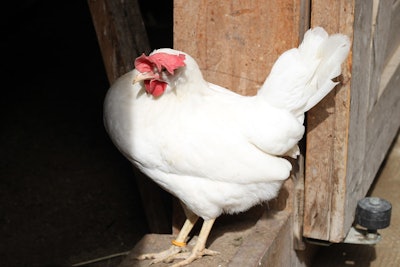
Keel bone damage has often been recognized by the egg industry as an important issue affecting layers that occurs in all types of housing. Fractures are commonly attributed to collisions in the layer houses. However, after investigating prevalence of keel bone fractures in Danish layer hens, researchers at the University of Copenhagen believe fractures are coming from an internal source.
Therefore, the University of Copenhagen conducted a study from 2016 – 2019 of almost 5,000 birds that compared layer body weight, age, and estimated daily egg weights with prevalence of keel bone fractures. Housing types included enriched colonies, aviaries, and free-range systems.
Bird size
The study found that heavier birds were less likely to have fractures and had fewer fractures overall when compared to lighter birds. In the study, birds with a body weight of 2,500 grams (6.25 pounds) had the lowest average number of keel bone fractures, while the light to midweight hens had the highest number of keel bone fractures.
Using a risk factor analysis, researchers determined that the risk of obtaining a keel fracture throughout the production period decreased by 3% per a 100-gram (4 ounce) increase in body weight. In over 96% of layers that had a keel bone fracture, they were found at the caudal tip of the keel bone.
Egg size
Additionally, researchers also found a relationship between estimated daily egg weights and prevalence of keel bone fractures. Researchers determined that lower estimated daily egg weights at the onset of lay resulted in fewer fractures. “The risk increases by 3% per 1 gram (0.04 ounce) increase in the estimated daily egg weight at the onset of lay. Thus, indicating that big eggs in the early laying period may have a negative effect on the keel bones,” explained the researchers.
It was concluded that pressure from the inside of a small bird’s body cavity (with a not yet fully ossified keel bone and while laying large eggs) could potentially affect the tip of the not completely ossified keel bone and cause a fracture.
More research
Due to the challenge that keel bone fractures present in the egg industry, $1.4 million in grants was awarded to Purdue University, University of California, Davis and University of Edinburgh to conduct research in January 2018. The grants were awarded by The Foundation for Food and Agriculture Research (FFAR), whose mission is to fund pioneering research in critical challenge areas of the agricultural industry.


















